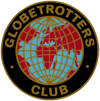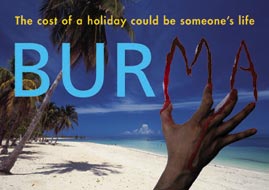In Part 1 of Ingrid’s tale, she discovered that she had Dengue
Fever. In Part 2, we hear about how she was treated and what happened
next.
We entered the hospital. I felt like I was walking into one of those
bars in a western movie where every one stops and stares at you. My head
felt dizzy and focusing was impossible. What was happening to me? Looking
back, I must have looked really spaced out.
The nurse once again took my blood pressure. She shook her head, checked
the equipment and took it again. Not convinced, she took it once more.
She told me to remain seated and rushed off to the doctor’s room.
I was called in and informed that my blood pressure was 96/80, so low
that it was not pumping blood to my brain properly. I was immediately
put onto a bed. Before I knew it, they were after my blood again – this
time – I was too weak to care.
Noi waved a form in front of me. “What food you want?” she
said. I realized then that this was not just a day visit. Thai or Chinese
at 80baht or Western at 250baht. Which would you choose at those prices?
I chose the Thai, signed the form and was taken to a room on the 7th
floor.
As they wheeled me into place, I looked down at the drip in the back
of my hand. My eyes widened. I blinked and took a second look. Was I hallucinating?
Like something out of a horror movie, I could see ants running up and
down the drip and under the plaster. Was I the only one concerned about
this? The nurse ignored them at first, then she carelessly slapped them
away. Ow!
Two hours later, with the little energy I had, I was still removing
ants from various parts of my body. I asked to be moved. Off they wheeled
me to another room but, before we settled, I looked down at the bedside
table and spotted an ant, so off we trouped again. Eventually an ant free
room was found – it had a pet gecko instead.
During the next 24 hours, I had no idea what was happening. I was constantly
nauseous, feverish, had a banging headache, backache and leg ache. I did
not know if I was going to live or die. When I pressed the call button,
three nurses would skip in and stand to attention at the end of my bed.
After telling them what I needed, they would smile, nod their heads and
disappear. Great service but no reward. After a while, I would have to
call again. They had obviously misunderstood. Often, it would take lots
of exhausting hand signals and facial expressions before they would realise
what I needed.
Day two in Hospital. I was not feeling any better nor any the wiser
as to my condition. Feeling extremely nauseous but starving, I was happy
to see my first breakfast walk in on a tray. I lifted the lid and to my
surprise… squid soup! Oh yuk! Not something I would eat if I felt
100%. I gave the brekkie a miss.
After the much improved lunch, I was watching a low budget Hollywood
movie when there was a knock on my door, followed by the priest! Oh my
God, this is it, I thought: this illness is terminal – my time has come.
I was a little alarmed that he had come to give the last rights but so
delirious I could not find the energy to be scared. He smiled and told
me he was visiting because he wanted to practice his English.
Every day the doctor would visit at around 5pm. He would look at me,
ask me if I had any bleeding or rash. I would reply no. He would nod,
turn around and walk back out again … Er hello some sort of information
would be nice Doc!
Over the next few days there was no improvement. It felt like groundhog
day. The repeated rubbish movies on the only English speaking channel,
the continual disruption of my snoozing as a piece of rubber was slapped
round my arm, cutting off my circulation. A needle was jabbed into it
extracting more blood, scaring the life out of me.
On the fourth night came the grand finale – the rashhh!!!! It
was more than just any old rash. It lasted over twenty-four hours. My
face swelled up like a car’s airbag on impact, my hands and feet
swelled, went bright red, itched like crazy at first and then felt like
they were on fire, aaagh damn that Dengue!
Anticlimax: on the sixth day the doctor came in, looked at me, turned
around and walked out again. Ten minutes later the senior nurse entered
and told me I could go home. Three days passed before I snapped out of
it and got my energy back. Within a fortnight I was back on the island
where I caught the disease. Crazy or not, I was determined not to let
the Dengue fever put me off my trip. This was my horse and I am so glad
I got back on it.
Later I discovered that the deadly Dengue Haemorrhagic Fever not only
occurs in young children but also in people who have caught one strain
of Dengue Fever and then catch another.
Hurry up with a vaccine. Please!
If you would like to contact Ingrid, who is currently in Chile, you
can e-mail her on:gr.ing.a.rid2003@hotmail.com

 The Burma Campaign say that the development of
hotels, transport and tourist attractions to encourage visitors to Burma
is directly linked to mass human rights abuses. There are well-documented
mass human rights abuses directly linked to the development of tourist
infrastructure and the tourism industry. The United Nation's International
Labour Organisation reports that “the military treat the civilian
population as an unlimited pool of unpaid forced labourers and servants
at their disposal. The practice of forced labour is to encourage private
investment in infrastructure development, public sector works and tourism
projects.”
The Burma Campaign say that the development of
hotels, transport and tourist attractions to encourage visitors to Burma
is directly linked to mass human rights abuses. There are well-documented
mass human rights abuses directly linked to the development of tourist
infrastructure and the tourism industry. The United Nation's International
Labour Organisation reports that “the military treat the civilian
population as an unlimited pool of unpaid forced labourers and servants
at their disposal. The practice of forced labour is to encourage private
investment in infrastructure development, public sector works and tourism
projects.”